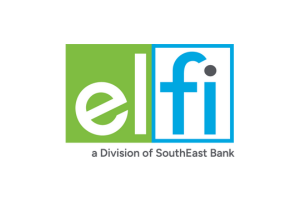There’s a story not getting told in America. It’s really two stories actually. The first is that student loan borrowers are doing really well and are actually paying down their debt.
For the first time in years, student loans are growing at roughly the pace of the economy overall. The second truth is that the population of six-figure student loan borrowers is exploding at an unprecedented pace.
Average student loan debt by occupation
How can both stories be true? If you look deeply in the data as we’re going to do, you’ll see that the typical borrower owes about $33,460, according to my calculations using Dept of Ed data.
However, there’s a ton of people who owe a modest amount and a significant group who owes more than most people’s mortgages.
The typical borrower is doing really well right now, thanks to a booming economy, stock market, housing market, and overall positive consumer sentiment. Student loan refinancing has allowed borrowers to pay down that level of debt even more rapidly.
Times are so good, I even have 30 something student loan borrowers asking me what to do with six-figure gains from selling California real estate.
Hidden in the data though is a small subset of the population that’s driving much of the future cataclysm that will occur in the student loan market. You either are one of these folks yourself or you go to one regularly. Dentists, veterinarians, occupational therapists, attorneys, physicians, chiropractors, pharmacists, the list is literally too long.
I’ve encountered at least three dozen different professions that get saddled with huge student loans. Here’s a sampling of the ones I’ve seen below.
Occupation | Average Debt of Student Loan Planner Clients |
Dentist | $377,477 |
Physician | $316,364 |
Veterinarian | $271,604 |
Lawyer | $218,348 |
Chiropractor | $240,818 |
Pharmacist | $221,052 |
Orthodontist | $621,000 |
Physical Therapist | $156,526 |
Occupational Therapist | $193,100 |
Physician Assistant | $194,588 |
Nurse Practitioner | $164,136 |
Psychologist | $226,000 |
Speech Language Pathologist | $85,200 |
Architect | $152,000 |
Optometrist | $258,556 |
Six-figure student loan borrowers forced into their plight by expanding requirements

We are facing an environment of hyper credentialing in the U.S. Physical therapists used to be able to get their master’s and practice. Conveniently around the time the government started underwriting unlimited student loans, the profession decided everyone needed a doctorate degree. Occupational therapists are moving this direction.
Other professions require longer and longer courses of study. Oral surgeons used to get by on a four year training period after dental school. Now many schools push folks to do a six-year MD program combined with residency training.
A school wants to further any profession it instructs, so naturally, the school should advocate for the highest standards of training, right? My belief is that a lot of university deans and presidents realized they could get another year of tuition and thought, “why the heck not? Let’s add a year to our program and push for it to be a profession-wide requirement.”
Overall student loan growth is slowing
Check out the stats I put together showing the annual growth in percent of the federal student loan market. You can basically see the common narrative that everybody went back to school during the recession.
Year | Federal Loan Borrower Growth | Federal Loan Dollar Growth |
2008 | 5.7% | 11.8% |
2009 | 7.4% | 13.9% |
2010 | 6.9% | 14.1% |
2011 | 6.4% | 13.1% |
2012 | 4.9% | 11.8% |
2013 | 3.4% | 9.7% |
2014 | 2.8% | 8.6% |
2015 | 2.2% | 7.3% |
2016 | 1.7% | 6.6% |
2017 | 0.7% | 5.8% |
2018 YTD | -0.9% | 3.3% |
For the year to date 2018 numbers, the number of borrowers has actually SHRUNK!
The rate of growth in student loan debt has roughly slowed every year since the height of the last economic crash.
We know that when the economy is doing well, prospective students face a higher cost to attending school in lost wages, called opportunity cost.
When a recession happens, that cost goes down so workers tend to go back to school. This pattern would happen regardless of whether the government funds education or not.
However, right now we have the borrowers with good credit scores, low debt to income ratios, and no forgiveness options opting to rapidly pay off their debt.
How fast are the biggest student loan balances growing?
Where things get really scary are when you break down student loan borrower data by the amount they owe. What you find is that folks who owe less than $80,000 are mostly stable overall. This group of folks is likely very profitable for the federal government, which charges high-interest rates.
Amount | Dollars 1-Year Growth | # of Borrowers 1-Year Growth |
Less than $5k | -2% | -2% |
$5k to $10k | -1% | -1% |
$10k to $20k | 0% | -1% |
$20k to $40k | 1% | 1% |
$40k to $60k | 3% | 3% |
$60k to $80k | 5% | 4% |
$80k to $100k | 10% | 9% |
$100k to $200k | 8% | 11% |
$200k+ | 17% | 17% |
*Source: Federal Student Loan Portfolio data and Student Loan Planner® calculation
Look at the borrowers who owe more than $200,000 in federal student loan debt. Their number grew by about 17% last year! At that rate, their number would double approximately every 4.5 years.
We currently have about 700,000 borrowers in America who owe more than this 200k number. There are about 2 million who owe between 100k and 200k.
Student loan borrowers with six-figure debt well do not get taken care of well by the system

While we would love to help everyone who has a bunch of student loan debt, this site is focused on borrowers who owe $50,000 to $1 million. There are plenty of resources out there for folks who paid off their $13,000 student loans with Lyft / Uber side hustles over 3-day weekends.
This fairly large group of six-figure student loan borrowers gets screwed over at every direction. The student loan servicers absolutely suck when you’re dealing with financial decisions as large as a mortgage.
There are plenty of scammers out there who masquerade as experts that would love your money while they pretend to help you.
Employers are obsessed with providing student loan repayment assistance. That’s a great idea to a workforce that owes an average of $30,000. When a company like Banfield does it for their veterinarians who owe huge balances and should be going for loan forgiveness on average, I laugh (or cry?) at the lack of understanding.
Congress should do something about greedy universities in America
No one seems to suspect a university as being a sketchy organization. I don’t think the people at most universities are any better or worse than most at your typical large employer. However, I think they’re operating under one of the worst systems of incentives that have ever been created.
Grad school professional programs have 0 reasons to care about the tuition they charge their students. The government gave them no reason to give a flip when they passed the Grad Plus program in 2006.
Financial aid counselors tell students student debt is “good debt” because that’s what they’ve been saying the past several decades. The problem is that was before the cost for many professional degrees rivaled the cost of a house.
The only way to slow the exploding growth of six-figure student loan balances is to put severe caps on the amount of federal student loan debt. That would create different problems, but restraint is the only way to slow the slow boiling crisis we are creating in the future.
Ideally, I’d like to go take my dog to the vet without having to worry about her having $400,000 of student debt. I’d like to have my dental work done by someone who’s not stressed out about her career choice. When I get advice from an attorney, I don’t want them thinking about their student loans when they’re telling me what kind of estate plan I need.
Getting help if you owe six figures of student debt
For now, the main story with the student loan system to me will be the continued relentless growth of six-figure student loan borrowers compared to the improving picture overall thanks to the economy.
When we have our next recession I expect student debt will go back to double-digit growth rates overall. Hence, it will be a little while before we hit the $2 trillion student loan debt number.
The scary part (like I’ve shown) is that the composition of the $1.5 trillion student loan debt that exists continues to get scarier for borrowers with the largest balances. It’s clear that the US will have a massive bill on its hands when millions of borrowers can’t afford to pay their tax bombs for loan forgiveness. Obviously, the PSLF program will also cost a massive amount.
Student Loan Planner® exists to help you navigate the stupidity surrounding the setup of our student loan system. One day, maybe student debt won’t be such a problem. I’ll figure out something else to do then.
Until that day (I think it’ll be a long time), check out how we can help.
What do you think is driving the growth of six-figure student loan balances? What should Congress do to change this? Or do you think it’s ok? Sound off in the comments.
Refinance student loans, get a bonus in 2024
| Lender Name | Lender | Offer | Learn more |
|---|---|---|---|

|
$500 Bonus
For refinancing 100k or more (bonus from Student Loan Planner®, not SoFi®)
|
Fixed 3.99 - 9.99% APR
Variable 5.99 - 9.99% APR with all discounts with all discounts |
|

|
$1,000 Bonus
For 100k or more. $200 for 50k to $99,999
|
Fixed 3.99 - 9.74% APR
Variable 5.74 - 9.74% APR
|
|

|
$1,000 Bonus
For 100k or more. $300 for 50k to $99,999
|
Fixed 4.99 - 10.24% APPR
Variable 5.28 - 10.24% APR
|
|

|
$1,050 Bonus
For 100k+, $300 for 50k to 99k.
|
Fixed 4.99 - 8.90% APR
Variable 5.29 - 9.20% APR
|
|

|
$1,275 Bonus
For 150k+, $300 to $575 for 50k to 149k.
|
Fixed 4.84 - 8.44% APR
Variable 4.86 - 8.49% APR
|
|

|
$1,250 Bonus
For 100k+, $350 for 50k to 100k. $100 for 5k to 50k
|
Fixed 3.99 - 10.98% APR
Variable 4.86 - 12.39% APR
|
Not sure what to do with your student loans?
Take our 11 question quiz to get a personalized recommendation for 2024 on whether you should pursue PSLF, Biden’s New IDR plan, or refinancing (including the one lender we think could give you the best rate).
